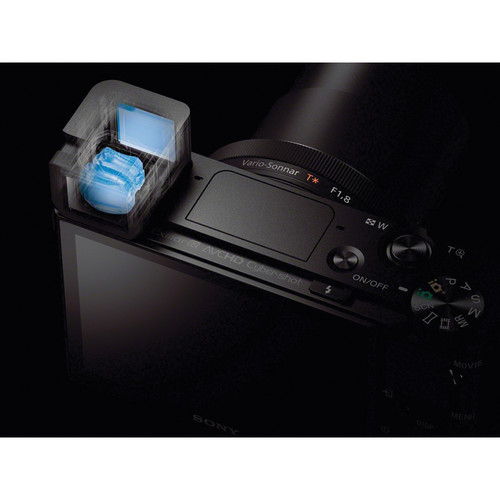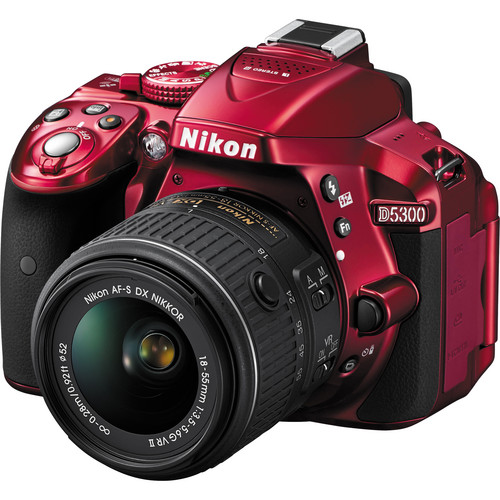
Sony Cybershot DSC-RX100 III Digital Camera
I’ve reviewed the first Sony RX100 and the Sony RX100 II, and I liked both of them – but not enough to buy one. While the form factor was excellent, I struggled with the price and was frustrated by its default shutter speed choices (which often were too long to get a crisp shot). In the end, they were both a camera I loved but couldn’t bring myself to buy. Would the third time be a charm? Would this be the one that made me bite the bullet and get one? Read on to find out.
What’s new at a glance
There’s other sites that get into all of the details, but fundamentally there’s tome minor improvements in the sensor and the lens which in theory improve quality. As you read my review you can refer to my earlier reviews and see if you agree. Yes, this camera takes nice images, but I never got that “on my gosh, this is waaaay better” feeling. Perhaps my bookshelf tests in the next installment might make me feel different.
What I did like right off the bat was the improvement to the tilt feature of the LCD which now allows for 180 degree tilt which means selfie’s are now possible while looking at a live LCD preview. While I’m not a big selfie person, young couples and mom’s shared their frustration with me that the previous RX 100 models didn’t allow this functionality. Now mom can get her shot with the baby when dad’s at work, and best friends at the night club can get selfies complete with live previews of any attempted photo bombs.
Beyond this there’s some video performance improves and the inclusion of an integrated ND filter, but the thing that will get the most attention is the new pop up electronic viewfinder shown in illustration format here:

0.39" 1,440k-dot SVGA OLED Tru-Finder has Zeiss T*-coated optics
This actually works well thanks to a diopter which allows you to fine tune it for your vision. The quality is quite good and feels as natural as the rear LCD. What’s more, it uses a lot less battery life so it makes a great option when the battery starts getting low (which was a problem I never had in normal usage).
First Thoughts
While the menus haven’t improved to my liking, it was good to see that they are very familiar from other models like the a7/a7R. Features like zebra pattern and focus peaking work the same way, so people committed to the Sony platform will love this camera.
Of all of the camera systems I’ve tested, my least favorite user interface design comes from Sony. Sadly that opinion wasn’t changed here, but with the flexibility to program buttons to do what you want results in a camera that’s usable. I’d still like a “Q” menu that more closely mirrors what Canon, Nikon and Fujifilm do with their quick menus, but Sony does try with their mini version.
I still found focus point and mode adjustments cumbersome, but programming quick access to these helped. I also saw the classic Sony problem of the camera having a love affair with 1/30 sec (which if you shoot anything that moves then odds are it will be blurry). Sadly manual mode is the only solution as Sony still hasn’t implemented a minimum shutter speed or alternate feature for Aperture Priority and Program Mode to prevent this annoying behavior.
The LCD screen is as you would expect from Sony – excellent. In fact, it is so good that often times your image will look so good on the screen that you think you’ve got a fantastic shot but when you get it on your computer you realize that it wasn’t as razor sharp as you thought. What’s more, Sony hasn’t done anything to improve its built-in noise reduction feature, so it will make a nasty mess doing noise reduction on higher ISO images. As a result, I still strongly recommend users turn OFF noise reduction when using this camera and save that process for external products like Noiseware for the best results. I didn’t do that for the images below, but for any personal images I care about the in-camera noise reduction here gets turned off.
The weight and size of this camera have increased, but it isn’t going to be very noticeable to most people. It’s still an outstanding size and not unreasonably heavy in my opinion, but it’s a few ounces heavier than some of the competition so if you put it in your shorts pocket you better wear a belt!
Overall there’s lots of great photography features and geek features like the ability to install apps, do wireless image transfer and NFC. This and above average image quality and fast performance make this a camera that is very capable and enjoyable to use, which is why I’ve really enjoyed its predecessors as well as this latest version. If you bought or were tempted by previous versions of the RX100, you’ll most certainly appreciate this version which is without question the best version yet.
Real World Sample Images (Part I of II)
As always, these images ALL RIGHTS RESERVED (yes, even the lame ones <g>). You may not save, edit, print, redistribute or otherwise use them without expressed written permission.
The full set of images are available at http://photos.ronmartblog.com/sony/rx100iii, but below are a few that I wanted to bring to your attention. Click the image for the original in-camera JPEG version and view using the gallery to see EXIF information. All major settings were camera defaults unless otherwise mentioned. In most cases I’m using Aperture Priority or Intelligent Auto modes with camera defaults and Auto White Balance (except the more orange looking cave shots below where I chose Cloudy White Balance).

f/2.2 @ 8.8 mm, 1/30, ISO 125, No Flash
Definitely take the time to click the image above for the full size original so you can appreciate the level of detail this sensor will capture. The detail and dynamic range are outstanding from this camera at lower ISO’s.

f/2.8 @ 8.8 mm, 1/100, ISO 400, No Flash
While it’s tough to get a good shot of my son who bounces around like Tigger, I thought this shot had beautiful color and skin tones with great detail and bokeh for a camera of this size. Shots like this quickly reminded me why I loved the previous RX100’s I reviewed so much.

f/4 @ 8.82 mm, 1/160, ISO 125, No Flash
In this tough mixed light shot, this camera does a very admirable job of retaining detail in the shadows without blowing out the whites too bad.

f/2 @ 8.8 mm, 1/30, ISO 125, No Flash
This is a great example of one of those shots that the viewfinder made look so good that I thought I nailed the shot, but upon closer inspection I blew it. I quickly was reminded how important it is to zoom in on your shots with the camera before calling a shot “done”.

f/2.8 @ 25.7 mm, 1/80, ISO 250, No Flash
Despite being back lit, my wife was happy with how this camera handled those situations. Even the shadow areas of my oldest sons left eye under his hat turned out okay in the “Superior Auto” mode we used here. Unfortunately though, the focus and sharpness aren’t that great when you zoom in.

f/2.8 @ 15.31 mm, 1/125, ISO 640, No Flash
Thanks to the small sensor you get a lot of depth of field even at f/2.8

f/2.5 @ 10.51 mm, 1/125, ISO 800, No Flash
In-camera color is very accurate with only a small tasteful amount of color enhancements

f/1.8 @ 8.8 mm, 1/320, ISO 125, No Flash
The shadow detail is extremely impressive from this camera, so the Dynamic Range Optimizer feature did a great job with this difficult lighting condition

f/2.8 @ 21.79 mm, 1/125, ISO 125, No Flash
From the texture of the skin, to the detail in the eyelashes, I was very impressed with the Zeiss lens on this camera. The bokeh was also very good for this size sensor at f/2.8.

f/2.8 @ 14.3 mm, 1/40, ISO 4000, No Flash
Shooting handheld in a cave using my wife’s iPhone 5s gave us lots of blurry and poorly exposed images with terrible color, but I was impressed with how well the Sony did. The in-camera noise reduction made the camera look worse than it really was but shooting RAW+JPEG gave me the option to fix that using the raw image.

f/1.8 @ 8.8 mm, 1/500, ISO 3200, No Flash
Panos haven’t changed from the predecessor, but my test unit frequently gave me a grey bar at the end of the pano no matter how slow or fast I went when shooting.

f/1.8 @ 8.8 mm, 1/13, ISO 800, No Flash
The color is different for this shot because I used the Hand held twilight SCN mode feature which reverted back to AWB. It did an okay job and managed to stay at ISO 800 for this shot.

f/2.8 @ 23.53 mm, 1/20, ISO 6400, No Flash
While the noise reduction really destroyed a lot of detail in this shot, this camera did an admirable job (for a handheld shot(with the camera resting on a round pipe-like railing)
I’ll have more images in the next installment, but hopefully you can see that this is certainly better than your average cell phone or point and shoot. Yes, there’s a reason why this camera is expensive, despite its size, but will that be enough to convince me to ditch my x20?
Conclusion
See part II - Sony RX100 III - The Best Quality Point and Shoot I’ve Ever Tested (Review Part II of II).
Where to order
Click here to learn more or order the Sony RX100 III on the B&H web site.
Other articles you may enjoy
If you enjoyed this article, you may also enjoy these:
Disclosure
If you make a purchase using links found in this article, I may make a commission. It doesn’t cost you a penny more, but it does help to support future articles like this.
NOTE: This site requires cookies and uses affiliate linking to sites that use cookies.
. Either way, your support is greatly appreciated!
This blog is intended for freelance writing and sharing of opinions and is not a representative of any of the companies whose links are provided on this site.
The opinions provided are of Ron Martinsen alone and do not reflect the view of any other entity


















































